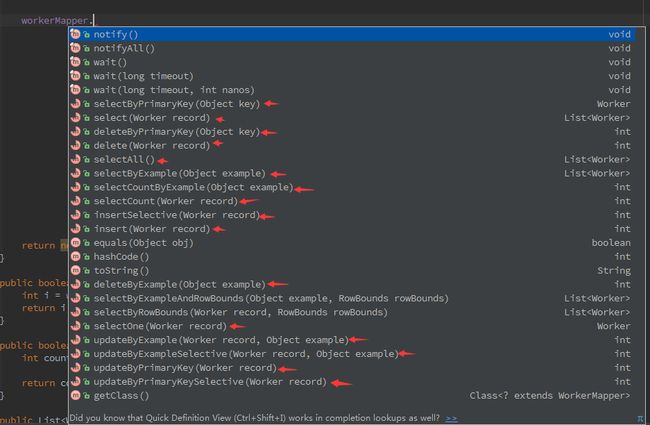- StarRocks中优雅处理JSON与列表字段的初步示例
t.y.Tang
数据库mysqljson
StarRocks是一种兼容MySQL语法,自带对JSON,ARRAY等格式支持的数据库.文章目录一StarRocks是什么?与MySQL有何关系?二JSON格式的好处三JSON数组字段的应用和缺点四实例:StarRocks处理JSON数组的方法示例表结构场景1:筛选包含特定事件的用户场景2:提取数组中的嵌套字段场景3:展开数组为多行(UNNEST)场景4:复杂条件过滤(结合`$`索引)五,性能优
- C# 语法糖:深度解析与代码实例演示
墨瑾轩
一起学学C#【一】c#
C#作为一种现代、面向对象的编程语言,内置了许多语法糖(SyntacticSugar)特性,旨在简化代码书写、提升代码可读性与编写效率,而不会牺牲程序的语义或性能。语法糖并非语言的新功能,而是对已有功能的封装或简化表示,编译器在编译阶段会将其转换为等效的基础语法。以下是一些C#中常见的语法糖特性,结合详细描述、代码示例和注释进行展示。1.属性(Auto-ImplementedProperties)
- C++:函数指针进阶(三):Lambda函数详解:概念详解
FishAnd_Yu
#C++精华c++C++Lamdba
1:Lambda函数语法C++语法的基本格式为:[capture](parameters)->return_type{/*...*/}(1)[capture]:[]内为外部变量的传递方式,值、引用等,如下[]//表示的是在lambda定义之前的域,对外部参数的调用;[=]//表示外部参数直接传值[&]//表示外部参数传引用,可修改值。当默认捕获符是&时,后继的简单捕获符必须不以&开始。而当默认捕获
- 一、Python入门基础
MeyrlNotFound
python开发语言
1.Python简介与环境搭建•了解Python的历史、特点和应用领域Python的历史Python是一种高级编程语言,由GuidovanRossum于1989年发明。Python语言的设计目标是让代码易读、易写、易维护,从而提高开发效率和代码质量。自其诞生以来,Python已从一个简单的系统管理工具发展成为一种广泛应用于多个领域的编程语言。Python的特点1.简单易学:Python的语法简洁明
- JDK8新特性
陈天在睡觉
知识点总结JavaSEjavaJDK8javase八股文后端
JDK8是官方发布的一个大版本,提供了很多新特性功能给开发者使用,包含语言、编译器、库、工具和JVM等方面的十多个新特性。本文将介绍编码过程中常用的一些新特性。一、Lambda表达式1.优点简化匿名内部类的写法,允许你以简洁的方式表示可传递给方法或存储在变量中的代码块,用更加简洁和表达性的语法来编写匿名函数,从而简化了对函数式接口的实现,使代码更加简洁紧凑。提高了代码的可读性和可维护性,尤其是在处
- JavaScript基础-DOM的一些基本常用语法
Southern Wind
JavaScriptjavascript
总结了一下JS一直到DOM中所用的单词的用法输入方式:window.prompt('请输入数据');输出方式:1、window.alert('HelloJavaScript');2、console.log输出到控制台3、输出数据到页面document.write('hello')JavaScript数据类型1、基本类型string:字符型number:数值型boolean:布尔型2、特殊类型und
- spark explain如何使用
fzip
Sparkspark执行计划
在Spark中,explain是分析SQL或DataFrame执行计划的核心工具,通过不同模式可展示查询优化和执行的详细信息,默认情况下,这个语句只提供关于物理计划的信息。以下是具体使用方法及不同模式的作用:1.explain的基本语法在Spark3.0及以上版本,explain支持多种模式参数,通过mode指定输出格式:#DataFrame调用方式df.explain(mode="simple"
- C语言三大程序结构 & 单分支语句
要下雨了吗
c语言c++visualstudio
核心概念:程序就像流水线,通过顺序、选择、循环三种结构完成复杂任务一、三大程序结构图解结构类型形象比喻代码示例顺序直行马路→不拐弯printf("A");printf("B");选择岔路口→二选一if...else循环环形跑道→重复绕圈for/while二、选择结构:if语句完全指南1.基础语法(单分支)if(条件表达式){语句1;//条件成立时执行}else{语句2;//条件不成立时执行}2.真
- HTML--表格
MK-mm
html前端
HTML表格一,语法表格的标签为,行的标签为,表项的标签为,可以用表示列或行的第一个单元格。格式为:标题表头1表头2...表头n表头表项1......表项n-1...快捷键:table>tr*个数>td*个数二,属性补充:设置表格背景图像,可用bgcolor或background属性,在标签内设置。三,不规则表格使用colspan和rowspan属性建立-跨行:单元格垂直方向合并,语法为单元格内容
- Python 常用内建模块-HTMLParser
赔罪
Python系统学习python开发语言
目录HTMLParser小结练习HTMLParser如果我们要编写一个搜索引擎,第一步是用爬虫把目标网站的页面抓下来,第二步就是解析该HTML页面,看看里面的内容到底是新闻、图片还是视频。假设第一步已经完成了,第二步应该如何解析HTML呢?HTML本质上是XML的子集,但是HTML的语法没有XML那么严格,所以不能用标准的DOM或SAX来解析HTML。好在Python提供了HTMLParser来非
- X.509数字证书的签名和指纹
汽车通信技术
【付费专栏】车载以太网协议数字证书
X.509是一种非常普遍的数字证书标准,由国际电信联盟(ITU)制定。它定义了证书的格式和一种验证证书有效性的方法。X.509证书的结构遵循特定的语法和编码规则,通常使用ASN.1(AbstractSyntaxNotationOne)进行描述和编码。一个典型的X.509证书通常包含:版本、序列号、签名算法、颁发者、有效期、使用者、公钥、签名、指纹等。其中,版本号表示证书是哪个版本的,不同版本的数字
- SQL自学:怎么创建视图
m0_74823471
面试学习路线阿里巴巴sql数据库
在SQL中,视图是一种虚拟表,它是基于一个或多个表的查询结果集。视图并不实际存储数据,而是在每次查询时动态生成结果。一、创建视图的语法(以MySQL为例)CREATEVIEWview_nameASSELECTcolumn1,column2,...FROMtable_nameWHEREcondition;view_name:是要创建的视图的名称。column1,column2,...:要在视图中显示
- 深入理解 <; 和 >;:HTML 实体转义的核心指南!!!
小丁学Java
积累小知识JavaWebhtml前端
️深入理解<和>:HTML实体转义的核心指南️在编程和文档编写中,符号无处不在,但它们也是引发语法错误、安全漏洞和渲染混乱的头号元凶!本文将聚焦<(小于号)和>(大于号)这两个HTML实体,解析它们的核心作用、使用场景及避坑技巧,助你写出更安全、更健壮的代码!一、❓为什么需要转义?1.符号冲突问题•HTML/XML标签冲突:是标签的起始和结束符(如)。若直接在文本中使用,解
- SassScript:Sass中的编程特性详解
jiajia651304
sass前端css
Sass(SyntacticallyAwesomeStylesheets)是一种强大的CSS预处理器,它允许开发者使用类似于编程语言的语法来编写CSS,然后通过编译生成标准的CSS代码。SassScript是Sass中的编程特性集合,它包含了变量、嵌套规则、混合、函数以及控制指令等,极大地提高了CSS的开发效率和可维护性。1.变量SassScript中的变量允许开发者在样式表中存储和重复使用值。变
- python 捕获异常
weixin_30730151
python数据库
异常:由于代码的逻辑或者语法错误导致的程序中断。在学习Python的过程当中,大家一定要区分清楚异常和布尔值False布尔值的False只是一个值,通常代表的是一个条件的不成立,常用于逻辑判断比如:1num=22print(num>3)3ifnum>3:4print("num>3")异常指的是由于代码的逻辑或者语法错误导致的程序中断比如:1num=222+"2"了解了上面的逻辑之后,我们来看看大家
- Java:从入门到创新
java
Java:从入门到创新一、Java简介Java是一种广泛使用的高级编程语言,自1995年首次发布以来,一直深受开发者的喜爱。它由SunMicrosystems公司开发,后来被Oracle公司收购。Java的设计目标是简单、健壮、安全且跨平台,这些特性使其在企业级应用开发中占据重要地位。二、Java的主要特点(一)简单易学Java的语法与C语言和C++语言很接近,但丢弃了C++中一些复杂且容易出错的
- Vue.js 模板语法全解析:从基础到实战应用
予安灵
前端vue.js前端javascriptvue生命周期vue指令vue项目结构vue插值
引言在Vue.js的开发体系中,模板语法是构建用户界面的核心要素,它让开发者能够高效地将数据与DOM进行绑定,实现动态交互效果。通过对《Vue.js快速入门实战》中关于Vue项目部署章节(实际围绕Vue模板语法展开)的深入研读,我们将全面剖析Vue项目结构、应用程序实例、生命周期、插值、指令以及自定义指令等关键内容,并通过实战案例加深理解。1.Vue项目详解项目目录结构以常见的vite-app项目
- 根据文件名称查询文件所在位置
姚不倒
linux运维数据库
在Linux中,根据文件名称查询文件所在位置主要通过命令行工具实现,以下是几种常用方法:---###**1.使用`find`命令(最灵活)**`find`命令可以递归搜索指定目录下的文件,支持按名称、类型、时间等条件过滤。####**基础语法**```bashfind[搜索路径]-name"文件名"```####**示例**-全局搜索名为`example.txt`的文件:```bashfind/-
- 「MySQL」日期时间格式化函数 DATE_FORMAT() 的使用详解
m0_74823827
mysqladbandroid
目录一、DATE_FORMAT()语法二、格式化字符串详解三、常见日期时间格式组合四、业务场景五、总结一、DATE_FORMAT()语法DATE_FORMAT()是MySQL中用于格式化日期时间的函数:语法:DATE_FORMAT(date,format_string)date:需要格式化的日期化时间值,一般是需要被格式化的日期时间类型(datetime类),但也可以是日期时间形式的字符串form
- 深入理解 Vue3 中的 Reflect 和 Proxy 使用
写完这行代码打球去
#vuevue.js前端javascript
Proxy详解讲到Proxy对象相信大家都肯定很熟悉,vue3的响应式原理就是以此为基础的。Proxy对象用于创建一个对象的代理,从而实现基本操作的拦截和自定义(如属性查找、赋值、枚举、函数调用等)。Proxy语法简要介绍constp=newProxy(target,handler)handler常用方法get-拦截对象属性的读取操作set-拦截对象属性的设置操作has-拦截属性查询操作delet
- C++学习:六个月从基础到就业——C++基础语法回顾:数据类型、变量与常量
superior tigre
C++学习:六个月从基础到就业c++学习
C++学习:六个月从基础到就业——C++基础语法回顾:数据类型、变量与常量本文是"C++学习:六个月从基础到就业"系列的第一篇技术文章,主要回顾C++的基本数据类型、变量定义和常量使用,为后续深入学习打下基础。查看完整系列目录了解更多内容。引言编程的本质是对数据的处理,而数据类型、变量与常量是任何编程语言的基础构建块。在C++中,对这些基础概念的深入理解不仅能让我们编写出正确的代码,还能帮助我们编
- CMake 函数和宏
arong-xu
CMakec++CMakecmake教程
CMake函数CMake函数定义语法如下,其中name为函数名,为参数名,为函数体.函数定义后,可以通过name调用函数.函数名允许字母数字下划线,不区分大小写.function(name[...])endfunction()如下的样例定义了一个函数fun,不带任何参数.function(fun)message("Hello,World!")endfunction()#调用函数fun()FUN()
- 从零开始学习 Go 语言
九班长
Golang学习golang后端开发语言gin
Go语言(又称Golang)是由Google开发的一种静态强类型、编译型、并发型编程语言。它以其简洁的语法、高效的并发支持和强大的标准库而闻名,非常适合开发高性能的服务器端应用、分布式系统和云计算工具。本文将从零开始,详细介绍如何学习Go语言,涵盖基础语法、核心概念、并发编程、工具链和实战项目等内容。1.Go语言简介1.1Go语言的特点简洁易学:语法简洁,学习曲线平缓。高效编译:编译速度快,生成的
- 一文说清预训练与微调:AI的双重训练法则
TGITCIC
AI-大模型的落地之道人工智能深度学习
什么是预训练?预训练是大型语言模型训练的第一步。它在资金和计算能力的支持下,通过深入分析大量的文本数据,使模型建立起语言的基本构架。在这一阶段,模型通过学习海量的书籍、文章和网页,识别出语言的语法、句法和词汇规律。这就如同一名学生接受通识教育,他并没有专注于某一门学科,而是获取了多方面的知识。自回归语言建模和掩码语言建模是预训练中常见的两种方法。前者在逐步构建文本的连贯性时,通过预测下一单词的方式
- 深入理解 JSON.stringify:优雅输出 JSON 数据
天天进步2015
前端开发json
在JavaScript开发中,JSON数据的处理是一项基础且关键的技能。JSON.stringify()方法作为将JavaScript对象转换为JSON字符串的标准工具,其功能远不止于简单的数据转换。本文将深入探讨JSON.stringify()的使用技巧、参数配置以及常见陷阱,帮助开发者更优雅地处理JSON数据输出。基础用法JSON.stringify()的基本语法如下:JSON.stringi
- 【MySQL基础-10】MySQL中的LENGTH()函数:用法详解与实例分析
AllenBright
#MySQLmysql数据库
在MySQL数据库中,LENGTH()函数是一个非常常用的字符串函数,用于计算字符串的字节长度。理解并掌握LENGTH()函数的用法,对于处理字符串数据、优化查询以及进行数据验证都非常有帮助。本文将详细介绍LENGTH()函数的用法,并通过实例演示其在实际中的应用。1.LENGTH()函数的基本语法LENGTH()函数的基本语法如下:LENGTH(str)str:要计算长度的字符串或字段。可以是字
- 零基础上手Python数据分析 (7):Python 面向对象编程初步
kakaZhui
python数据分析excel
写在前面回顾一下,我们已经学习了Python的基本语法、数据类型、常用数据结构和文件操作、异常处理等。到目前为止,我们主要采用的是面向过程(ProceduralProgramming)的编程方式,即按照步骤一步一步地编写代码,解决问题。这种方式对于简单的任务已经足够,但当程序变得越来越复杂,代码量越来越大时,面向过程编程可能会显得力不从心,代码难以组织、复用和维护。代码复杂性带来的挑战:面向过程v
- 正则表达式
思考的橙子
后端正则表达式
概念:正则表达式定义了字符串组成的规则定义:1.直接量:注意不要加引号varreg=/^lw{6,12}$/;创建RegExp对象varreg=newRegExp("^lw{6,12}$");方法:test(str):判断指定字符串是否符合规则,返回true或false语法:^:表示开始$:表示结束[]:代表某个范围内的单个字符,比如:[0-9]单个数字字符.:代表任意单个字符,除了换行和行结束符
- Python --**kwargs
潇湘馆记
python
在Python中,**kwargs是一个特殊语法,用于在函数定义中接收任意数量的关键字参数(即键值对参数),并将这些参数以字典形式存储。它是Python中处理动态参数的强大工具,适用于需要灵活传递参数的场景。1.基本语法定义方式:在函数参数列表中使用**kwargs(名称可以自定义,但通常遵循kwargs约定)。参数类型:kwargs是一个字典,键是参数名,值是对应的参数值。示例defprint_
- 用Python爬虫获取AliExpress商品信息:item_search API接口实战指南
JelenaAPI小小爬虫
PythonAPIpython爬虫开发语言
引言在全球化电商的浪潮中,数据的力量不容小觑。对于电商分析师、市场研究者以及在线商家而言,能够快速获取商品信息是至关重要的。AliExpress作为全球知名的跨境电商平台,提供了丰富的商品数据。本文将介绍如何使用Python爬虫结合item_searchAPI接口,按关键字搜索并获取AliExpress上的商品信息。一、为什么选择Python爬虫Python因其简洁的语法和强大的库支持,成为编写爬
- ViewController添加button按钮解析。(翻译)
张亚雄
c
<div class="it610-blog-content-contain" style="font-size: 14px"></div>// ViewController.m
// Reservation software
//
// Created by 张亚雄 on 15/6/2.
- mongoDB 简单的增删改查
开窍的石头
mongodb
在上一篇文章中我们已经讲了mongodb怎么安装和数据库/表的创建。在这里我们讲mongoDB的数据库操作
在mongo中对于不存在的表当你用db.表名 他会自动统计
下边用到的user是表明,db代表的是数据库
添加(insert):
- log4j配置
0624chenhong
log4j
1) 新建java项目
2) 导入jar包,项目右击,properties—java build path—libraries—Add External jar,加入log4j.jar包。
3) 新建一个类com.hand.Log4jTest
package com.hand;
import org.apache.log4j.Logger;
public class
- 多点触摸(图片缩放为例)
不懂事的小屁孩
多点触摸
多点触摸的事件跟单点是大同小异的,上个图片缩放的代码,供大家参考一下
import android.app.Activity;
import android.os.Bundle;
import android.view.MotionEvent;
import android.view.View;
import android.view.View.OnTouchListener
- 有关浏览器窗口宽度高度几个值的解析
换个号韩国红果果
JavaScripthtml
1 元素的 offsetWidth 包括border padding content 整体的宽度。
clientWidth 只包括内容区 padding 不包括border。
clientLeft = offsetWidth -clientWidth 即这个元素border的值
offsetLeft 若无已定位的包裹元素
- 数据库产品巡礼:IBM DB2概览
蓝儿唯美
db2
IBM DB2是一个支持了NoSQL功能的关系数据库管理系统,其包含了对XML,图像存储和Java脚本对象表示(JSON)的支持。DB2可被各种类型的企 业使用,它提供了一个数据平台,同时支持事务和分析操作,通过提供持续的数据流来保持事务工作流和分析操作的高效性。 DB2支持的操作系统
DB2可应用于以下三个主要的平台:
工作站,DB2可在Linus、Unix、Windo
- java笔记5
a-john
java
控制执行流程:
1,true和false
利用条件表达式的真或假来决定执行路径。例:(a==b)。它利用条件操作符“==”来判断a值是否等于b值,返回true或false。java不允许我们将一个数字作为布尔值使用,虽然这在C和C++里是允许的。如果想在布尔测试中使用一个非布尔值,那么首先必须用一个条件表达式将其转化成布尔值,例如if(a!=0)。
2,if-els
- Web开发常用手册汇总
aijuans
PHP
一门技术,如果没有好的参考手册指导,很难普及大众。这其实就是为什么很多技术,非常好,却得不到普遍运用的原因。
正如我们学习一门技术,过程大概是这个样子:
①我们日常工作中,遇到了问题,困难。寻找解决方案,即寻找新的技术;
②为什么要学习这门技术?这门技术是不是很好的解决了我们遇到的难题,困惑。这个问题,非常重要,我们不是为了学习技术而学习技术,而是为了更好的处理我们遇到的问题,才需要学习新的
- 今天帮助人解决的一个sql问题
asialee
sql
今天有个人问了一个问题,如下:
type AD value
A
- 意图对象传递数据
百合不是茶
android意图IntentBundle对象数据的传递
学习意图将数据传递给目标活动; 初学者需要好好研究的
1,将下面的代码添加到main.xml中
<?xml version="1.0" encoding="utf-8"?>
<LinearLayout xmlns:android="http:/
- oracle查询锁表解锁语句
bijian1013
oracleobjectsessionkill
一.查询锁定的表
如下语句,都可以查询锁定的表
语句一:
select a.sid,
a.serial#,
p.spid,
c.object_name,
b.session_id,
b.oracle_username,
b.os_user_name
from v$process p, v$s
- mac osx 10.10 下安装 mysql 5.6 二进制文件[tar.gz]
征客丶
mysqlosx
场景:在 mac osx 10.10 下安装 mysql 5.6 的二进制文件。
环境:mac osx 10.10、mysql 5.6 的二进制文件
步骤:[所有目录请从根“/”目录开始取,以免层级弄错导致找不到目录]
1、下载 mysql 5.6 的二进制文件,下载目录下面称之为 mysql5.6SourceDir;
下载地址:http://dev.mysql.com/downl
- 分布式系统与框架
bit1129
分布式
RPC框架 Dubbo
什么是Dubbo
Dubbo是一个分布式服务框架,致力于提供高性能和透明化的RPC远程服务调用方案,以及SOA服务治理方案。其核心部分包含: 远程通讯: 提供对多种基于长连接的NIO框架抽象封装,包括多种线程模型,序列化,以及“请求-响应”模式的信息交换方式。 集群容错: 提供基于接
- 那些令人蛋痛的专业术语
白糖_
springWebSSOIOC
spring
【控制反转(IOC)/依赖注入(DI)】:
由容器控制程序之间的关系,而非传统实现中,由程序代码直接操控。这也就是所谓“控制反转”的概念所在:控制权由应用代码中转到了外部容器,控制权的转移,是所谓反转。
简单的说:对象的创建又容器(比如spring容器)来执行,程序里不直接new对象。
Web
【单点登录(SSO)】:SSO的定义是在多个应用系统中,用户
- 《给大忙人看的java8》摘抄
braveCS
java8
函数式接口:只包含一个抽象方法的接口
lambda表达式:是一段可以传递的代码
你最好将一个lambda表达式想象成一个函数,而不是一个对象,并记住它可以被转换为一个函数式接口。
事实上,函数式接口的转换是你在Java中使用lambda表达式能做的唯一一件事。
方法引用:又是要传递给其他代码的操作已经有实现的方法了,这时可以使
- 编程之美-计算字符串的相似度
bylijinnan
java算法编程之美
public class StringDistance {
/**
* 编程之美 计算字符串的相似度
* 我们定义一套操作方法来把两个不相同的字符串变得相同,具体的操作方法为:
* 1.修改一个字符(如把“a”替换为“b”);
* 2.增加一个字符(如把“abdd”变为“aebdd”);
* 3.删除一个字符(如把“travelling”变为“trav
- 上传、下载压缩图片
chengxuyuancsdn
下载
/**
*
* @param uploadImage --本地路径(tomacat路径)
* @param serverDir --服务器路径
* @param imageType --文件或图片类型
* 此方法可以上传文件或图片.txt,.jpg,.gif等
*/
public void upload(String uploadImage,Str
- bellman-ford(贝尔曼-福特)算法
comsci
算法F#
Bellman-Ford算法(根据发明者 Richard Bellman 和 Lester Ford 命名)是求解单源最短路径问题的一种算法。单源点的最短路径问题是指:给定一个加权有向图G和源点s,对于图G中的任意一点v,求从s到v的最短路径。有时候这种算法也被称为 Moore-Bellman-Ford 算法,因为 Edward F. Moore zu 也为这个算法的发展做出了贡献。
与迪科
- oracle ASM中ASM_POWER_LIMIT参数
daizj
ASMoracleASM_POWER_LIMIT磁盘平衡
ASM_POWER_LIMIT
该初始化参数用于指定ASM例程平衡磁盘所用的最大权值,其数值范围为0~11,默认值为1。该初始化参数是动态参数,可以使用ALTER SESSION或ALTER SYSTEM命令进行修改。示例如下:
SQL>ALTER SESSION SET Asm_power_limit=2;
- 高级排序:快速排序
dieslrae
快速排序
public void quickSort(int[] array){
this.quickSort(array, 0, array.length - 1);
}
public void quickSort(int[] array,int left,int right){
if(right - left <= 0
- C语言学习六指针_何谓变量的地址 一个指针变量到底占几个字节
dcj3sjt126com
C语言
# include <stdio.h>
int main(void)
{
/*
1、一个变量的地址只用第一个字节表示
2、虽然他只使用了第一个字节表示,但是他本身指针变量类型就可以确定出他指向的指针变量占几个字节了
3、他都只存了第一个字节地址,为什么只需要存一个字节的地址,却占了4个字节,虽然只有一个字节,
但是这些字节比较多,所以编号就比较大,
- phpize使用方法
dcj3sjt126com
PHP
phpize是用来扩展php扩展模块的,通过phpize可以建立php的外挂模块,下面介绍一个它的使用方法,需要的朋友可以参考下
安装(fastcgi模式)的时候,常常有这样一句命令:
代码如下:
/usr/local/webserver/php/bin/phpize
一、phpize是干嘛的?
phpize是什么?
phpize是用来扩展php扩展模块的,通过phpi
- Java虚拟机学习 - 对象引用强度
shuizhaosi888
JAVA虚拟机
本文原文链接:http://blog.csdn.net/java2000_wl/article/details/8090276 转载请注明出处!
无论是通过计数算法判断对象的引用数量,还是通过根搜索算法判断对象引用链是否可达,判定对象是否存活都与“引用”相关。
引用主要分为 :强引用(Strong Reference)、软引用(Soft Reference)、弱引用(Wea
- .NET Framework 3.5 Service Pack 1(完整软件包)下载地址
happyqing
.net下载framework
Microsoft .NET Framework 3.5 Service Pack 1(完整软件包)
http://www.microsoft.com/zh-cn/download/details.aspx?id=25150
Microsoft .NET Framework 3.5 Service Pack 1 是一个累积更新,包含很多基于 .NET Framewo
- JAVA定时器的使用
jingjing0907
javatimer线程定时器
1、在应用开发中,经常需要一些周期性的操作,比如每5分钟执行某一操作等。
对于这样的操作最方便、高效的实现方式就是使用java.util.Timer工具类。
privatejava.util.Timer timer;
timer = newTimer(true);
timer.schedule(
newjava.util.TimerTask() { public void run()
- Webbench
流浪鱼
webbench
首页下载地址 http://home.tiscali.cz/~cz210552/webbench.html
Webbench是知名的网站压力测试工具,它是由Lionbridge公司(http://www.lionbridge.com)开发。
Webbench能测试处在相同硬件上,不同服务的性能以及不同硬件上同一个服务的运行状况。webbench的标准测试可以向我们展示服务器的两项内容:每秒钟相
- 第11章 动画效果(中)
onestopweb
动画
index.html
<!DOCTYPE html PUBLIC "-//W3C//DTD XHTML 1.0 Transitional//EN" "http://www.w3.org/TR/xhtml1/DTD/xhtml1-transitional.dtd">
<html xmlns="http://www.w3.org/
- windows下制作bat启动脚本.
sanyecao2314
javacmd脚本bat
java -classpath C:\dwjj\commons-dbcp.jar;C:\dwjj\commons-pool.jar;C:\dwjj\log4j-1.2.16.jar;C:\dwjj\poi-3.9-20121203.jar;C:\dwjj\sqljdbc4.jar;C:\dwjj\voucherimp.jar com.citsamex.core.startup.MainStart
- Java进行RSA加解密的例子
tomcat_oracle
java
加密是保证数据安全的手段之一。加密是将纯文本数据转换为难以理解的密文;解密是将密文转换回纯文本。 数据的加解密属于密码学的范畴。通常,加密和解密都需要使用一些秘密信息,这些秘密信息叫做密钥,将纯文本转为密文或者转回的时候都要用到这些密钥。 对称加密指的是发送者和接收者共用同一个密钥的加解密方法。 非对称加密(又称公钥加密)指的是需要一个私有密钥一个公开密钥,两个不同的密钥的
- Android_ViewStub
阿尔萨斯
ViewStub
public final class ViewStub extends View
java.lang.Object
android.view.View
android.view.ViewStub
类摘要: ViewStub 是一个隐藏的,不占用内存空间的视图对象,它可以在运行时延迟加载布局资源文件。当 ViewSt
